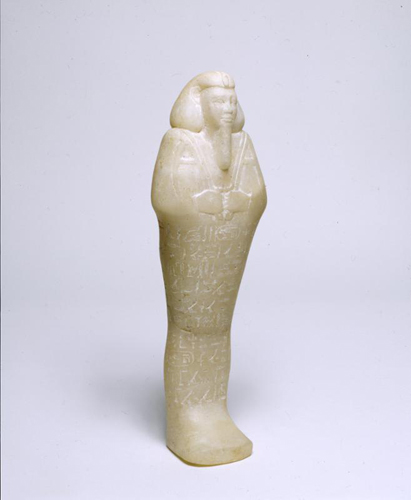
Shabtis are mummiform funerary figurines buried in tombs to assist the deceased in the afterlife. Early ones appeared first around 2000 BCE during Egypt’s Middle Kingdom and then became very popular in later periods. They occur in a wide range of quality: from crude mud versions to elaborate ones in fine materials for elite and royalty. This example in alabaster is a royal shabti belonging to king Taharka of the 25th Nubian or Kushite or Napatan Dynasty. The 25th Dynasty (ca. 770-657 BCE) is a line of rulers from Upper Nubia who ruled both Egypt and Nubia for a period close to a century. Taharka is the best known of these kings as a result of his numerous monuments and statues. The 25th Dynasty kings built pyramid tombs at Nuri near their home city of Napata close to the 4th Cataract of the Nile (in modern Sudan). These tombs were excavated by the American archaeologist George Andrew Reisner between 1916-1919.
Penn Museum Object #92-2-66
See this and other objects like it on Penn Museum’s Online Collection Database
